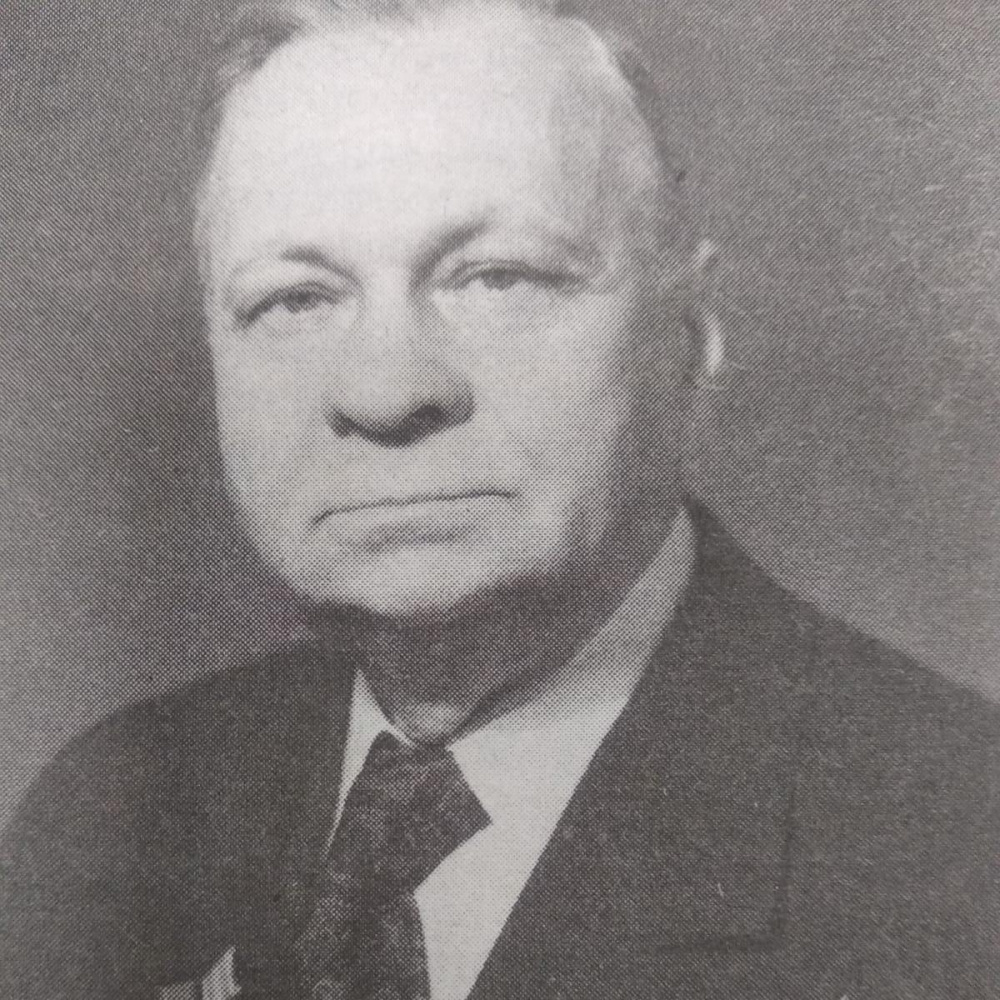 Aleksandr Naumov
Aleksandr NaumovThe master plan for the development of Leningrad in five versions (projects from 1935 to 1966) and its suburbs became the main fundamental work of the Honored Architect of the RSFSR, DSc in Architecture, Professor, Corresponding Member of the Academy of Construction and Architecture of the USSR Aleksandr Ivanovich Naumov (1907–1997). During the Great Patriotic War, this outstanding urban planner lived and worked in besieged Leningrad.
Aleksandr Ivanovich was born into a large family of a track patrolman at the Volovo station in the Tula province. He graduated from school with honors and entered the Moscow Topographical College. After graduation, he worked in Moscow, in the Main Geodetic Directorate of the Supreme Council of the National Economy. He served in military service near Leningrad. Then he entered the Faculty of Architecture of the Leningrad Institute of Municipal Construction Engineers (now SPbGASU).
While studying, in collaboration with other students, Aleksandr was awarded first prize in a competition for designs for the Palace of the Red Army and Navy in Kronstadt. A year later, also as a co-author, he received first prize in the competition for the draft master plan for the development of Leningrad. In 1936 he received a diploma with honors and an invitation to work in the architectural and planning department of the Leningrad City Council.
During the Great Patriotic War, Aleksandr Naumov worked in besieged Leningrad. Together with the chief architect of the city, Nikolai Baranov, he supervised the camouflage of objects that had important historical and administrative significance. Already in 1942, they jointly began to develop a new master plan for the city.
In 1948, a group of architects led by Nikolai Baranov and Aleksandr Naumov completed the development of the Master Plan for the restoration and development of Leningrad.
In the early 1950s, Aleksandr Ivanovich created and headed the architectural and planning workshop of Lenproekt. In 1950 he defended his PhD thesis. From 1952 to 1989 he taught at our university, where he trained 26 PhD of Architecture in Urban Planning specialization. As a teacher, he was distinguished by correctness, never imposed his opinion, tried to understand his interlocutor, and carefully considered the options proposed by students. He was calm, laconic, attentive and modest.
In 1976, by decision of the Higher Attestation Commission, he received the scientific degree of DSc in Architecture. For more than 50 years of creative activity, under his leadership and with his direct participation, about 120 major urban planning projects were completed and about 80 scientific works were published. He himself and a team of architects under his leadership completed projects for the reconstruction and development of the historical center of Leningrad, for the transformation of the banks of the Neva, for development along the northern and southern coasts of the Gulf of Finland and the western part of Vasilyevsky Island with the creation of the sea facade of the city, for landscaping. He worked on the general plans of Pushkin, Pavlovsk, Peterhof, Strelna, Gatchina, Sestroretsk, Lomonosov. He was aware of all the problems of Leningrad, had an excellent understanding of the peculiarities of the city’s topography, remembered old and new street names, and knew the history of the construction of the Northern capital.
From 1934 to 1978, the architect participated in 17 international and all-Union competitions. Among his works were projects for the centers of Murmansk, Kiev, Chelyabinsk, a project for the planning and reconstruction of the center of Berlin - the capital of the GDR.
Services to architecture were awarded with the Order of the Red Banner of Labor, the Badge of Honor and five medals, gold medals from VDNKh, prizes from the USSR State Construction Committee and other prizes. He was one of the first in Leningrad to be awarded the honorary title “Honored Architect of the RSFSR.” The name of Aleksandr Ivanovich Naumov is included in the Book of Honor in his homeland in the village of Volovo. Here, according to his designs, a square and alley of Heroes of the Soviet Union were created.
Other materials of the "Scientific Regiment" project
Our Graduate Built the Road of Life
Front Line of the Architect Aleksandr Nikolsky
Researcher who Developed Science in Besieged Leningrad
Fights of Student Klinov
Engineer of the 3rd Belorussian Front
Nineteen-Year-Old Gunner Stormed Berlin
Path of a Volunteer: from Front-Line Roads to Space Development
Ivan Solomakhin: "The Most Memorable Battle was for this Devil's Hill!"
Fiery Dnieper of the Hero of the Soviet Union Aleksandr Prygunov
Approaching to the Victory
Fedor Komal's Front: from the War Start to the Victory
Junior Political Instructor Boris Gubanov: “Shells Were Whizzing, and the Ground Took off Nearby”
Viktor Kvyatkovsky, Radio Reconnaissance Operator of the Baltic Fleet
How the Chief Architect Nikolai Baranov Kept Leningrad "Hidden" from the Enemy
Architect Nikolai Khomutetsky: Four Years at the Forefront
Semyon Shifrin Thwarted Nazi Plans to Leave Leningrad Waterless
LISI in the Post-War Years
LISI Graduate Mikhail Zherbin, Design Engineer and Composer
Abdulla Mangushev: Four Years at the Front and the Whole Life in Science
Architects Zazerskys Built and Defended the City on the Neva River
Worked His Way Up From a Lieutenant Technician to the Galaxy of Mathematicians
Konstantin Sakhnovsky: From Cadet Of the Russian Empire to Academician of the USSR
Military Architect Of The Front Line Defense And Engineering Intelligence
World-famous scientist, outstanding engineer and national champion